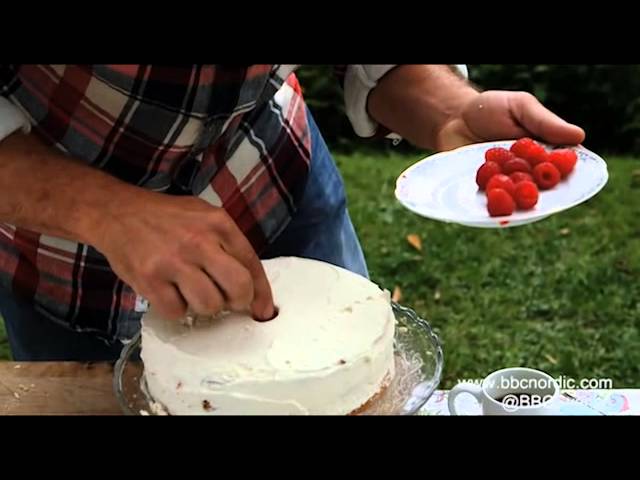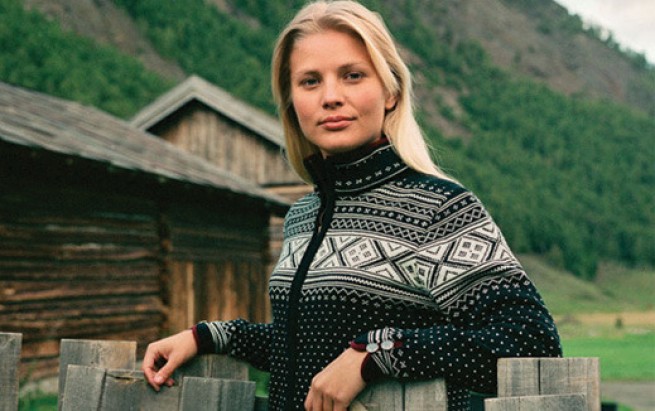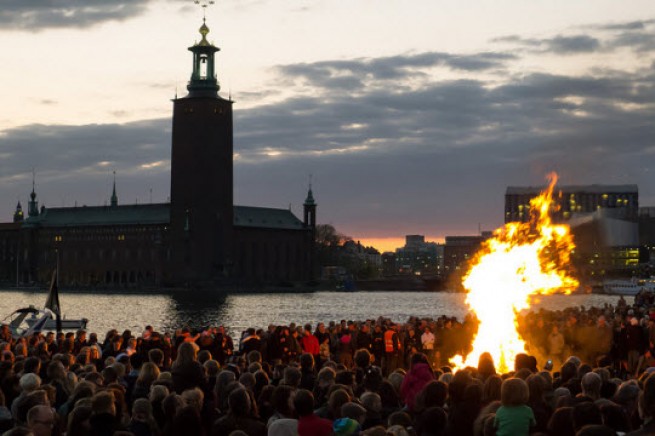There’s a certain symmetry in traveling to one of the world’s most visited places. My trip to the Norwegian fjords last summer allowed me to do just that while at the same time providing a great deal of historical insight and spectacular landscapes.

Getting started
The core of my trip, “Norway’s Fjords” was organized by Chicago travel agents Thomas P. Gohagan & Company for the benefit of several alumni organizations. Although not a graduate of Northwestern, I insinuated myself into their alumni association, converting temporarily from a Minnesota Gopher to a Wildcat.
Our ship, MS Le Diamant, operated by Compagnie du Ponant (www.ponant.com), was scheduled to depart from Bergen, Norway. I decided to go to Bergen three days early and elected to stay at Thon Hotel Rosenkrantz (Rosenkrantzgate 7). At NOK1,695 ($298) per night for a single room, it was a slightly cheaper option than the SAS Royal Hotel, recommended by Gohagan.
The Thon Hotel lies one street off the Bryggen, the town’s historic wharf, and was easily reachable from the airport by means of the Flybussen, the airport bus (85 kroner, or $15). A caution in booking a hotel — July is the height of the White Nights of the north, when it never gets fully dark, meaning that the locals and tourists stay up until all hours.
Because my room faced the street — and because I had to keep the window open to grab the few available puffs of cool air at night (there is little air-conditioning in Norway) — I was kept awake until 3 or 4 a.m. by partygoers staggering home from the bars along the Bryggen. I would recommend that anyone in any hotel in the area ask for a room facing away from the street.

When I complained about the noise, the receptionist assured me that there was nothing to be done, but she did suddenly produce a significant “weekend special” package that reduced my room rate by almost $100 a night for the last two days.
Bergen sights
The Bryggen represented Bergen’s trading power when the Hanseatic League, of which the town was a member, established a trading office on Vågen (the bay). The rows of wooden buildings, placed on UNESCO’s World Heritage List in 1979, were once houses and dormitories for the Hansa’s representatives, who oversaw the reciprocal trade in commodities like dried fish and grain between Norway and the rest of Europe.
Once considered an eyesore and a fire hazard, the leaning buildings of the Bryggen were often threatened with demolition, but today they house shops, restaurants and museums, all well worth a visit.
One of the most important, from a historical point of view, is the Hanseatic Museum (Finnegaardsgaten 1a), which re-creates the offices of the Hansa from 1360 until 1754.

The building includes the journeyman’s room and the lowly apprentices’ room, where boys slept two to a bed in an unheated room and where food was served cold to prevent fire.
Admission to the museum (50 kroner, or $9) includes entry to an associated building several blocks away, the Schøtstuene, or assembly hall, which would have belonged to all the merchants of one or more trade houses.
The Hansa ships, along with an entire parade of Norwegian seafaring craft, can be seen at the Sjøfartsmuseet, or Maritime Museum, located on the campus of the University of Bergen (Haakon Sheteligsplass 15). The museum (entry, 30 kroner) is a capsule of a very significant part of the history of a country that has over 15,000 miles of coastline.

Artistic outings
Norway’s favorite musical son is Edvard Grieg, so finding his music there is not difficult. I elected to attend an evening concert (NOK199, or $35) at the Korskirken, where a violin/piano duo played sonatas by Grieg plus one by Brahms. In such a small and charming setting, the music was very intimate.

There are concerts all the time in Bergen, and tickets for these and other events can be bought at the tourist office, Bergen Turlag (Tverrgaten 4).
It’s also possible to visit Grieg’s home (admission, 60 kroner, or $10), Troldhaugen, located just south of Bergen on Nordåsvannet Lake. 
The Bergen Art Museum (Rasmus Meyers allé 3), located right beside the lake Lille Lungegårdsvann, is known for its collection of works by 18th- and 19th-century artists such as Munch, Klee and Picasso. In such a small city, it is a fine collection (entry, 50 kroner). 
My next day featured a trip to Gamle Bergen, the open-air Old Bergen museum (Nyhavnsveien 4; phone 47 55 39 43 00), a short, two-mile bus trip away from town (take virtually any bus line going north to Sandviken for about 24 kroner).
The museum includes 35 buildings from the 18th and 19th centuries, including residences, shops and commercial buildings, all connected by rambling walkways and dotted with green areas. Only two houses and the grounds are open at no cost, but hourly guided tours (70 kroner) give a much more in-depth introduction to the lives of Norway’s coastal citizens during the recent past.
High costs
A caution — everything in Bergen (and in Norway, in general) is very expensive. Thanks to North Sea oil, Norway has gone from being one of the poorer countries in Europe to one of its richest, and this wealth is reflected in the cost of living. A large beer, for example, costs $16-$18, and food is commensurately expensive.
There are no bargain fast-food options (McDonald’s is just as expensive), so one way of keeping daily costs down is to take advantage of the filling breakfast at your hotel, making it your main meal. Another alternative is to take a package tour, with meals included, if you’re trying to travel on a budget.
To the ship!
On July 4, our group met for the transfer to Le Diamant. For those who prefer small ships, the Diamant is a find. All of its 113 cabins and suites are outside-facing, with large windows or balconies that let passengers enjoy the scenery. Each cabin has two twin beds that can convert to one queen-sized bed, plus private facilities with a shower or bath, a TV/DVD, a mini-bar and thick terrycloth robes.
As the ship is French-owned, the food is important. Breakfast and lunch were splendid buffets, but dinner was a two-hour or more sit-down affair, with wine included. The larger restaurant, Îles de France, offered open seating, while the smaller, more intimate L’Escapade required reservations.
If, God forbid, you need more food, an early-bird Continental breakfast, afternoon tea and room service complement the three regular meals.
The very imaginative and varied offerings should suit anyone, and for those with a special diet (I am a vegetarian), the chef will create special dishes. And I have never seen such an elaborate dessert table!
The ship also has three lounges, where nightly entertainment included a cabaret and live music. For quieter time, a small, unstaffed library with computers offers a chance to read or contact folks back home.
The onboard staff includes a physician, and each deck can be accessed by stairs or elevator.
The service was extraordinary; I hardly needed to think of something before it was offered.
There were three semiformal evenings (jacket and tie for men), and the rest of the time people tended to dress to a level above ordinary street dress.
From my point of view, one of the benefits of a small ship is its maneuverability. Especially in Norway’s picturesque fjords and among the many White Sea islands, the chance to see things up close and personal was a great advantage over a larger ship. The ship has an open-bridge policy, which helped when trying to spot beluga whales or Arctic terns.
Setting sail
We arrived the next day in Geirangerfjord, a deep, S-shaped inlet cut into high cliffs that is now a UNESCO World Heritage Site. The tiny town of Geiranger (population, 250) gets around 600,000 visitors a year, mainly by ship. The famous Seven Sisters and other waterfalls line the fjord walls on the approach to town.

We disembarked by tender, then went by bus up the many switchbacks to Dalsnibba, a peak situated 4,800 feet above sea level, for an amazing view of the fjord and the surrounding area.

As was typical for the entire trip, we had little time to wander Geiranger, instead heading back to the ship to sail on to our next destination. Afternoons aboard featured lectures by leaders of the various groups on board, on subjects ranging from Arctic flora and fauna to Viking exploration. All in all, the days were pretty full.
All of our guided excursions were included, so there was no need to pay admission or worry about transportation to and from the ship.
A day at sea followed, then we arrived at Svolvær on Austvågøy, the northernmost of the Lofoten Islands. Crossing the bridge to Vestvågøy, we visited a replica of the largest Viking longhouse ever discovered, at Borg, a 270-foot-long wooden building that would have housed about 80 people.

Svolvær was only about two miles from the dock, so most of those going ashore in the afternoon decided to walk in order to work off some of our fine dinners.
I wanted to get a jar of cloudberry jam and browse for gifts to bring home, so, because of our limited time ashore, I missed one of the main attractions of the town, the Lofoten War Museum (Fiskergata 12; phone 73 03 28). My fellow passengers pronounced it wonderful — chock-full of memorabilia, photos, uniforms and everything needed to tell the story of Norway’s involvement in World War II.
A pleasant surprise
When we were underway again, the captain announced the first of several “surprises,” asking everyone to come on deck. He directed the ship into the Trollfjord, a particularly scenic, needle-narrow fjord whose walls sliced straight down into the water. It seemed that we were going to touch the sides.

Once we reached the end, the captain turned the ship on its axis slowly and we maneuvered back out. It was an impressive surprise, both from the standpoint of scenery and seamanship.
We next sailed to Tromsø to be impressed again, this time by the importance of the Gulf Stream and the westerly winds that keep the Norwegian coast ice-free. Our first stop was the delightful botanical garden associated with Tromsø University, Botanisk Hage (Breivika). Among a wide range of flora from the northern regions, we admired fluorescent blue poppies that none of us had seen before.

We also made it to the Tromsø University Museum (Lars Thøringsveg 10), with its displays on Arctic animals and the culture of the Sami, or Lapps, a native group best known for reindeer herding. Spread through four countries (Norway, Sweden, Finland and Russia), the group is one of the best organized and most vocal of all indigenous peoples, working toward recognition of their culture and language.
The North Cape
Although we passed the Arctic Circle marker on our way north, the “high” point of the Norwegian part of our trip had to be the North Cape — at 71˚10’21” the northernmost point in Europe. According to our humorous captain, there are two North Capes: the actual northernmost point, which is a low-lying, rather uninteresting hunk of rock with a small white flag, and the “tourists’” North Cape, which is a massive cliff that plunges dramatically down into the water.

Our captain called us on deck for another surprise as we passed the Cape: champagne and onion soup, accompanied by the beautiful singing of one of the staff entertainers. We saluted the Cape, and each other, as we sailed by, watching the sun once again refuse to go below the horizon.
Next we went to the North Cape Plateau to enjoy the view over the Barents Sea and take the inevitable pictures at the North Cape monument. The visitors’ center there featured dioramas of historical events, plus a Thai temple and a 20-minute panoramic film showing the northern landscape.
We were unusually lucky with the weather throughout our trip; every day was sunny — and this day was no exception. Neither rain nor fog blocked our view, for which we thanked our lucky stars.
Written by guest contributor



























 Nowadays, Walpurgis Night is usually seen as a celebration of springtime. The
Nowadays, Walpurgis Night is usually seen as a celebration of springtime. The 


























